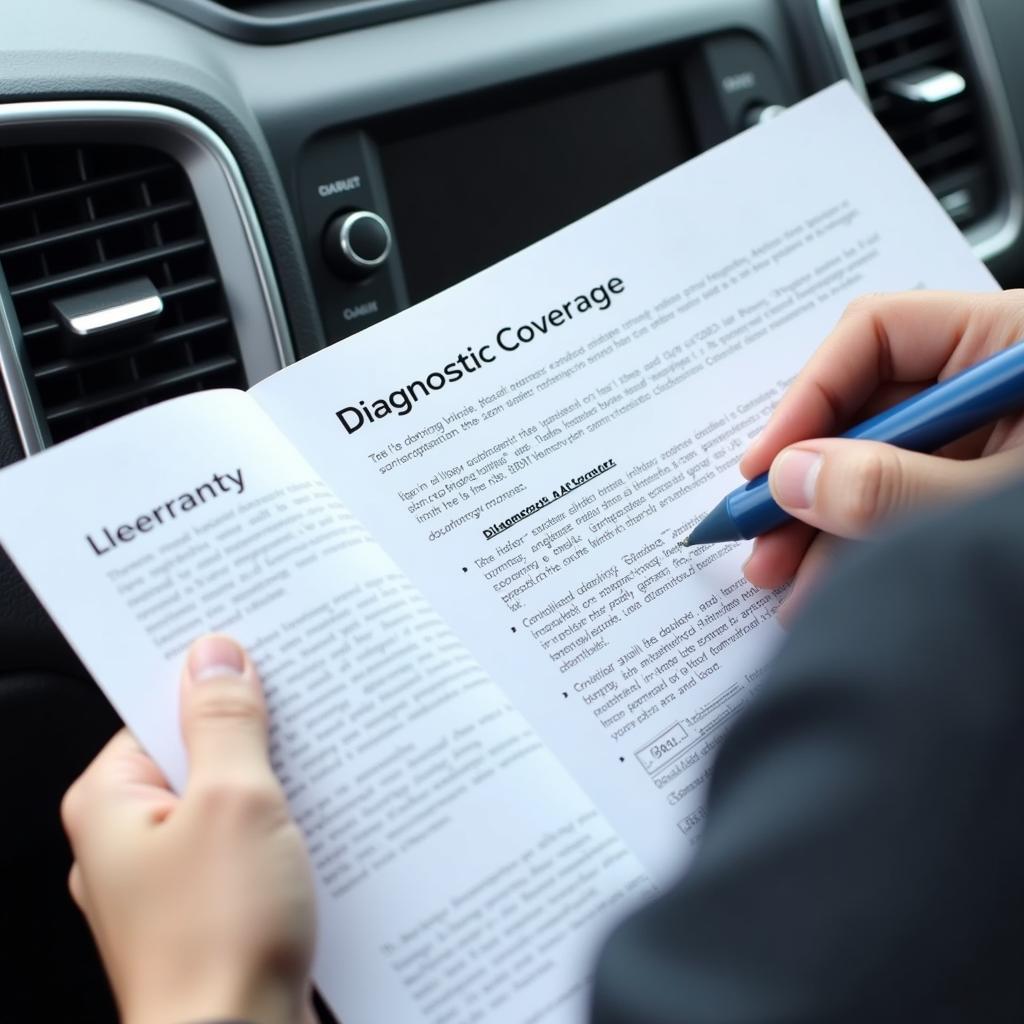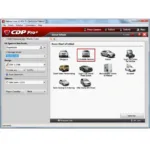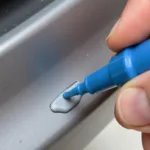Does car warranty cover diagnostics? This is a common question among car owners. Understanding your car warranty and what it covers can save you money and frustration. This article dives deep into the nuances of car warranties and diagnostic coverage, empowering you to navigate potential repair costs effectively. Let’s explore the relationship between your warranty and those sometimes-confusing diagnostic fees. After reading this, you’ll have a clearer picture of what to expect when those dreaded warning lights illuminate your dashboard.
Decoding Your Car Warranty and Diagnostic Coverage
Car warranties vary significantly, influenced by factors like the manufacturer, vehicle age, and specific warranty terms. Generally, new cars come with a “bumper-to-bumper” warranty covering most components excluding wear-and-tear items like tires and brake pads. Powertrain warranties, on the other hand, focus on the engine, transmission, and related components. So, where do diagnostics fit in?
A diagnostic test is crucial in pinpointing the root cause of a vehicle malfunction. This involves specialized equipment and skilled technicians to interpret the error codes and data retrieved from your car’s computer. The cost of these tests can vary. While many assume diagnostic tests are automatically covered under warranty, this isn’t always the case.
After the initial inspection, if the problem is indeed covered under warranty, the diagnostic fee is usually waived or reimbursed. However, if the issue stems from regular wear and tear, misuse, or modifications not approved by the manufacturer, you’ll likely be responsible for the diagnostic costs. Always consult your warranty documentation for specific details, as policies differ significantly between manufacturers and even specific warranty packages. For instance, an extended warranty might have different terms than the original factory warranty.
When Are Diagnostic Costs Covered?
Typically, if the diagnosed issue is directly related to a defect covered by the warranty, the manufacturer covers the diagnostic costs. For example, a faulty sensor within the engine, covered under the powertrain warranty, would mean the diagnostic charge is usually absorbed. However, situations involving wear-and-tear parts, like worn brake pads causing a warning light, likely wouldn’t fall under warranty protection, making you responsible for the diagnostic fee.
auto snap gd860 car scanner diagnostic tool
Understanding this distinction is vital in managing your expectations and budget. It’s important to note that even if the necessary repairs aren’t covered, knowing the root cause of the problem is invaluable. This information empowers you to make informed decisions about how to proceed with the repair, whether through an independent mechanic or the dealership.
Understanding the Fine Print: What to Look For in Your Warranty
Carefully reviewing your warranty documentation is paramount. Look for specific clauses related to diagnostic coverage. Some warranties might outline specific conditions or limitations. Don’t hesitate to contact the manufacturer or dealership directly for clarification if anything is unclear. Remember, being proactive and informed can save you from unexpected expenses.
Navigating Diagnostic Disputes
Occasionally, disagreements arise regarding diagnostic coverage. If you believe the diagnostic charge is unjustified, document everything meticulously. This includes the diagnostic report, repair invoices, and any communication with the dealership or manufacturer. A clear record strengthens your case if you need to escalate the issue. Remember, persistence and clear communication are key in these situations.
What if the Dealership Misdiagnoses the Problem?
A misdiagnosis, especially if it leads to unnecessary repairs, can be frustrating. Again, comprehensive documentation is crucial. Contact the dealership or manufacturer to discuss the situation. In some cases, they might offer to cover the costs of rectifying the misdiagnosis, especially if it occurred within the warranty period.
Tips for Managing Diagnostic Costs
- Maintain detailed service records. This provides a history of your vehicle’s health and can be helpful in warranty claims.
- Consider independent mechanics for diagnostics. They might offer lower diagnostic fees than dealerships.
- Invest in a car diagnostic tool memo scanner u281 for preliminary diagnostics. This can give you a basic understanding of potential issues before heading to a professional.
cheap car diagnostic test near me
Conclusion: Taking Control of Your Car’s Health
Understanding the intricacies of your car warranty and its coverage of diagnostic tests empowers you to manage potential repair costs effectively. Does car warranty cover diagnostics? The answer depends on your specific warranty and the nature of the problem. By being proactive, informed, and meticulous in your record-keeping, you can navigate the complexities of car repairs with confidence.
FAQ
- Does a car warranty always cover diagnostic tests? No, it depends on the warranty terms and the cause of the problem.
- Who pays for diagnostics if the issue isn’t covered by the warranty? Typically, the car owner is responsible.
- What should I do if I disagree with a diagnostic charge? Document everything and contact the dealership or manufacturer.
- Can I get a second opinion on a diagnosis? Yes, you can take your car to another mechanic for a second opinion.
- Are extended warranties the same as factory warranties regarding diagnostic coverage? Not necessarily. Read the terms of your extended warranty carefully.
- How can I find a reputable mechanic for diagnostics? Ask for recommendations from friends, family, or online reviews.
- What are some common car diagnostic trouble codes? There are many, and their meaning varies by manufacturer. Consult a repair manual or online resources.
Common Scenarios
- Scenario 1: Check engine light comes on, diagnostic test reveals a faulty sensor covered under warranty. The diagnostic fee is waived.
- Scenario 2: Brakes squealing, diagnostic confirms worn brake pads. The owner pays the diagnostic fee as brake pads are wear-and-tear items.
- Scenario 3: Car won’t start, diagnostic reveals a faulty starter motor after an accident. The owner likely pays as damage from an accident is usually not covered.
Further Reading
Check out our articles on x431pro car diagnostic and other diagnostic tools for more information.
Need help? Contact us via WhatsApp: +1(641)206-8880 or Email: [email protected]. Our customer service team is available 24/7.



